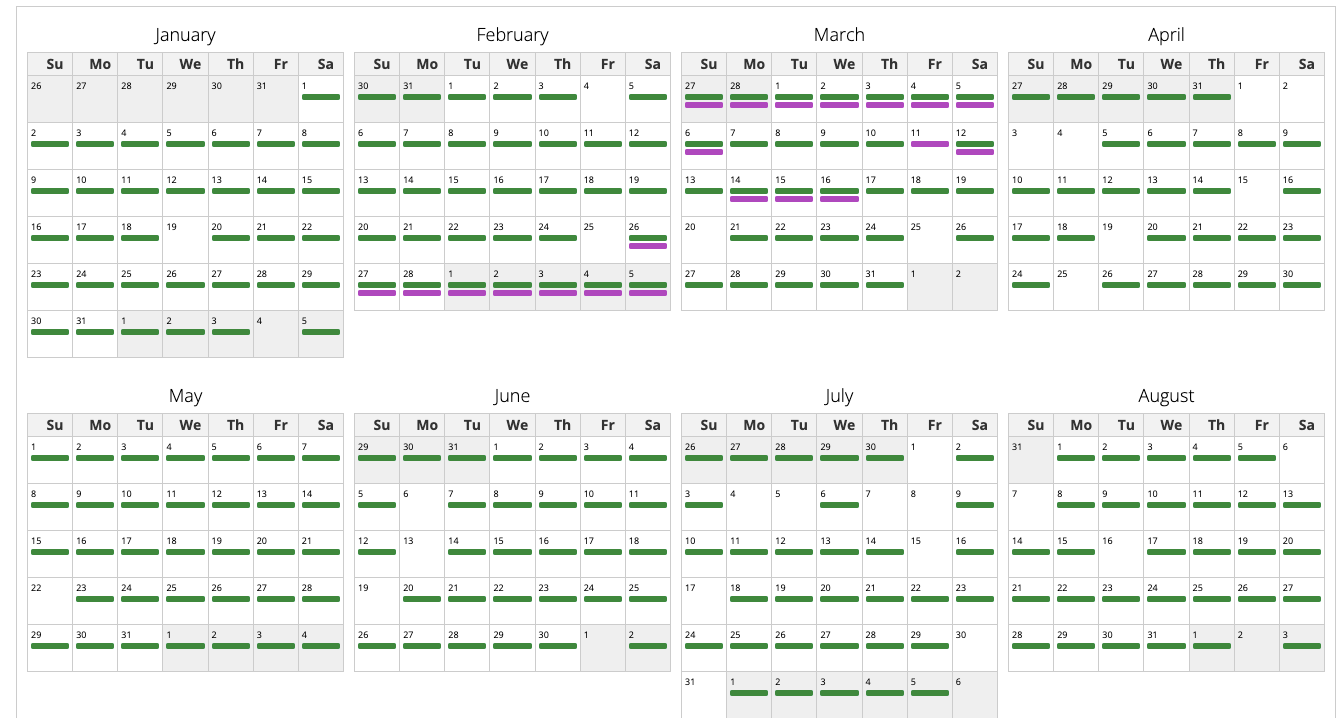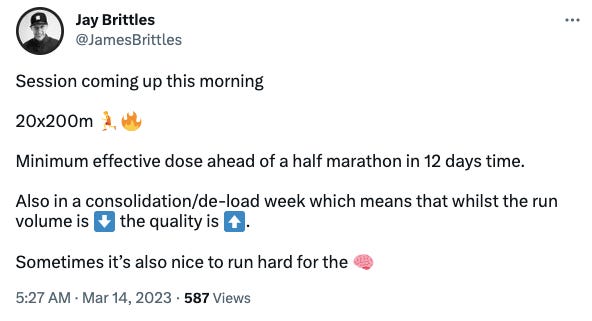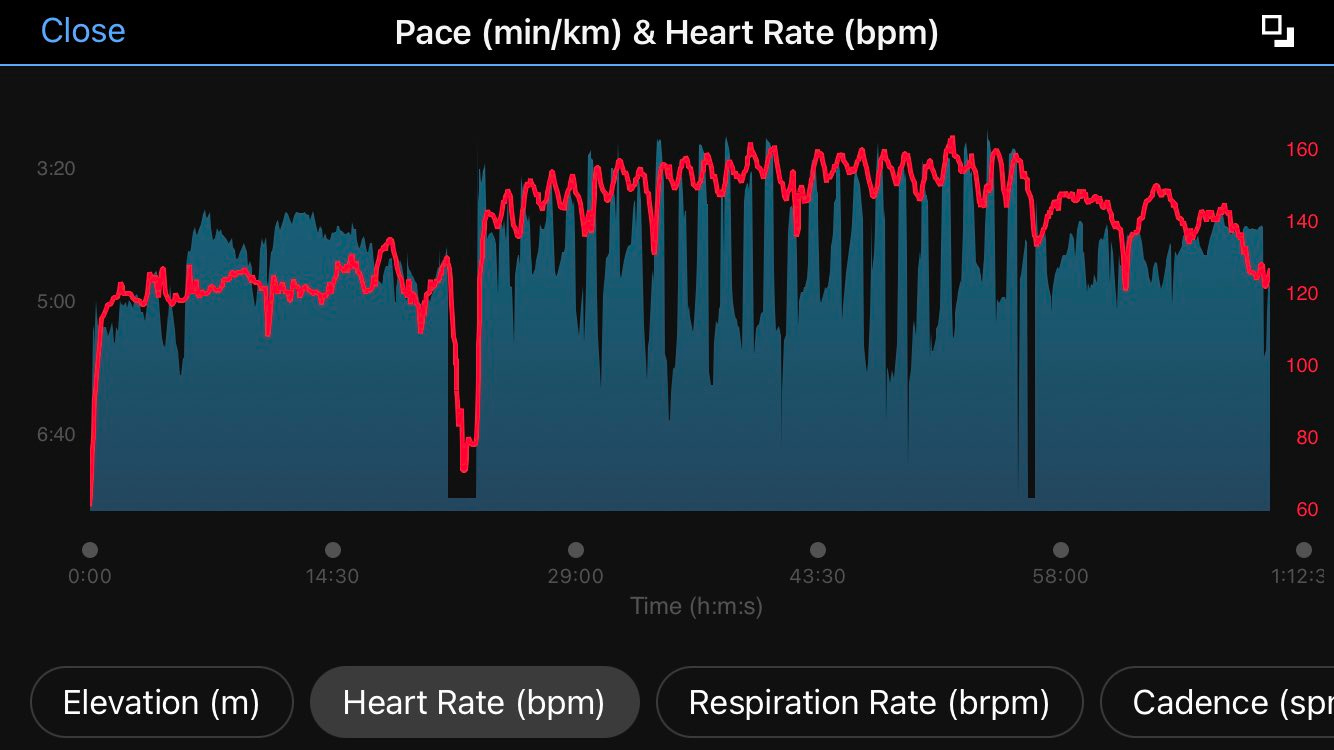How do you keep getting better each year?
10 habits that have helped me get better at Triathlon each year
As a time starved age group triathlete, I often get asked about my background and how I transitioned from playing football to competing in endurance sports. Recently, a colleague asked me a question that got me thinking about my journey and the habits that have helped me progress in the sport.
This might be useful for anyone starting out on their own journey.
For context, here is my background prior to Triathlon.
Age 8-22 played football to an average level and got better as I got older
Age 22-30 I would play x2 5aside games of football per week and lifted weights
Age 28/29 Joined a running club and then 2 years later decided to attempt a Triathlon
Between the ages of 8-30, I had never swam and had certainly never ridden a bike any longer than 30 mins
I had a 5k time of 30 mins and completed my first half marathon in 1.36
My first half marathon took me 1 hour and 36 minutes, and my 5k time was 20+ minutes. Since then, I have continued to improve year on year across swim, bike, and run, and my race results have reflected this progress
So, how did I manage to improve as a self-coached athlete with limited experience in endurance sports?
Here are some of the habits that have helped me along the way:
1. Be consistent
The number one lesson that I have learnt from my own experiences and that of those who have been the most successful around me has been be consistent. Small improvements year upon year compound to make significant gains over time.
There hasn’t been many periods or even weeks in the past 5 years that I haven’t been training for swim, bike or run. The only times that I have had off have either been planned to support the big picture goals or through illness.
I quite often see people book in for a big event each year and then once it is complete they completely fall out of the sport. They then spend a period of around 4-6 months inactive (lowering their ceiling) and then try and get back in to the sport at the same level they peaked at.
2. Build Resilience
Putting yourself in to challenging situations physically and mentally can help you build resilience over time. This can be achieved through training sessions/volume, racing against the conditions, overcoming injury & illness and even just putting yourself into unfamiliar race scenarios.
The benefit to being resilient is that life and sport can throw up plenty of obstacles and setbacks that can either deter you from your goal or drive you on even further should you be able to handle them.
One of the best examples that I can give here is about my scare with open water swimming and how I challenged myself to tackle it head on.
Blog Here: Open Water Swimming
3. Do the things you don’t want to do most
When people don’t have accountability, they will usually opt to complete the sessions that they enjoy most or feel they are good at. This will be ok in the main, however, it can leave you exposed to your blindspots and possibly the type of work that is holding you back from making progress.
I can go to three areas of work that I don’t particularly enjoy or feel I am good at but place extra emphasis on them during the training plan:
- Swim: Open Water Sessions
- Bike: Threshold Sessions (Over/Under, 2x20, 5x8 etc)
- Run: Short Track Work (16x400, 20x200 etc)
4. Seek out those better than you
If you are the strongest across all three disciplines in your group, there is only so long before you plateau and stop improving. I strongly believe that one of the quickest and easiest wins in terms of getting better each year for me has been to train with a group of athletes that are better than me.
There is a balance to find here though, if the group is too strong and you can’t at least hang with them for the majority of the session, you need to find a different group. However, if they are slightly better and you can stay with them, this opens the door up to getting your arse kicked every single week and learning how and why they are at that level.
Blog Here: Group Training for Coached Athletes
5. Know when to pull the plug
This was a big learning curve for me in 2021. I spent the majority of this year being disappointed with training and racing. Every time that I got ill I would rush back and try to make up for lost time. I would even race unwell and end up with either a DNF or DNS next to my name. Give yourself the time to recover and start back slowly to create longevity.
The same here also applies to when you are feeling good and you are hitting all of your key numbers, rather than leave yourself empty, get to know your body and pull the plug when you have had enough quality for one day, that will then in turn allow you to go again the next.
6. Learn from others
As with point 4, be open to learn at every single opportunity. This can come from podcasts, magazines, books etc but one of the best bits of learning you can get is from those around you. Watch and learn from other people’s habits and routines, work out what can be applied to you and what you would benefit from the most.
This applies to athletes of all ages and abilities. If you are a member of a Triathlon club, go and speak to the longest serving member. Find out what they know, where they have races, what has worked for them and what mistakes have they made that you can learn from.
7. Get up early
Every single morning I set my alarm for 4:50am. It allows me to get more done at a time that suits the family and usually I get my quality sessions completed ahead of a busy day in work.
Get in to a habit of getting up early, it might tie in to point 2 and 3 whereby you don’t want to do it but making it a habit builds some mental resilience. Even during half terms or holidays I keep my alarm set for that time as it still allows me to focus on other areas of life such as family or work if I am not training.
8. Have no excuses
Every single morning when that alarm goes off at 4:50am I think to myself, I could just leave today and catch up on it later in the week. If I was to allow that type of thought to win, there is no way I’d have made the same amount of progress year upon year as I have done.
Setting a no excuse culture around training has had positive impact on other areas of life such as friendships, work and family. If we say we are going to do something we do it otherwise we get called out on it.
9. Set Goals
I remember going for a long easy run with a good runner from a different running club to mine. As we were chatting, I asked the question, “So what’s next now you have met your goals”. His response blew my mind and it was something that I couldn’t get on board with.
“I’m done for the year, there is no way I could possibly get any better”
Even in the early stages of my endurance sport journey, I couldn’t accept that hitting something once is good enough and then calling it a day.
Every year I will set benchmarks and targets to keep me honest and keep me working towards short and medium term goals. These targets support the big A race/long term goal within that season. Once it is done, it is time to review and go again.
10. Never Stand Still
This probably backs up point 9, but there isn’t a year or season that I try and repeat the same things over and over again because they have given me success in the past. There will huge parts of the year before that I will carry across because they are tried and tested, however, in the areas that I feel I am deficient, I will often seek change after reviewing.
A small example here is in 2022 I had my best swim performances across all distances of any point in my triathlon journey. The easiest thing here would be to replicate that same pattern in 2023 and hope that I continue to improve. However, after reviewing the data, I made two simple changes that have taken my threshold from 1.40 per 100m to 1.30 per 100m.
Increase swim frequency from 3 swims per week to 4 (one additional swim at lunch for 30 mins)
Increase the volume/time of one of my key swims from 1 hour to around 1.20 (3k to 3.5k-4k)




